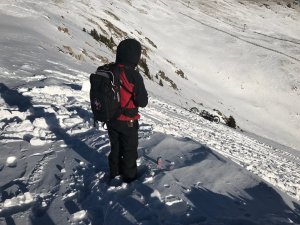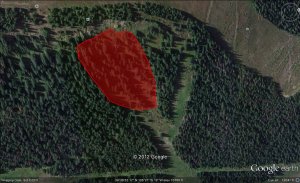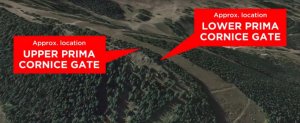I would be interested in seeing the actual jury instructions and how the jury answered each question.
I agree.
I would be interested in seeing the actual jury instructions and how the jury answered each question.
^^^ Agreed, and I'll add this is a great example of how we are really hurt by the death of newspapers. It seems unlikely anyone is going to dig that deep in their reporting.
Karen Crummy who did extensive reporting on this case is no longer with the Denver Post. It appears all of the reporting for the free mountain dailies and the Denver Post is now being done by one guy, Randy Wyrick of the Vail Daily. It seems like the days of multiple reporters competing to produce the best stories are long gone.
Long live Pugski and other Internet forums!
@jmeb I think it's really hard to make a case that doing no avalanche mitigation on Prima Cornice met any reasonable standard of care. I'm not a snow professional, but I've never seen any run like that open without mitigation. Especially given the extremely dangerous snowpack and forecast for high avalanche danger that day it just makes no sense. I'd love to hear how it makes sense if you or anyone have any thoughts.
For context, here's an excerpt from a Denver Post article about how Vail misled investigators about the mitigation work
The snow conditions leading up to Jan. 22 were “horrendous” due to a lack of snow and rotted snow layers that left the snow base weak, ski patrol supervisor William Mattison said in his deposition.
“We were waiting for avalanches to occur,” he said. “We knew that … once it did snow, it was going to be bad.”
Yet, Vail’s daily avalanche-mitigation reports do not show that any control measures were done on Prima Cornice prior to Jan. 22.
@jmeb I think it's really hard to make a case that doing no avalanche mitigation on Prima Cornice met any reasonable standard of care. I'm not a snow professional, but I've never seen any run like that open without mitigation. Especially given the extremely dangerous snowpack and forecast for high avalanche danger that day it just makes no sense. I'd love to hear how it makes sense if you or anyone have any thoughts.
For context, here's an excerpt from a Denver Post article about how Vail misled investigators about the mitigation work
The snow conditions leading up to Jan. 22 were “horrendous” due to a lack of snow and rotted snow layers that left the snow base weak, ski patrol supervisor William Mattison said in his deposition.
“We were waiting for avalanches to occur,” he said. “We knew that … once it did snow, it was going to be bad.”
Yet, Vail’s daily avalanche-mitigation reports do not show that any control measures were done on Prima Cornice prior to Jan. 22.
While I have no first hand knowledge of Prima Cornice, IMO in general closing an avy gate or roping off a run until avy mitigation can be carried out is a reasonable standard of care. It would seem that Vail made a mistake in not closing the second lower gate but then as I understand it the terrain below that gate is not avy prone.
To me the statement by the patrol supervisor about the horrendous conditions due to lack of snow prior to Jan.22 may in fact be the reason for a lack of avy mitigation in Dec. and Jan. as there may have been not enough snow to blast. Also Vail claimed that the avy gate had been closed not for avy conditions but rather lack of snow so presumably the run was closed for days or even weeks prior to the "biggest dump of the season" and it only switched to a avy closure due to the storm, so knowing that the gate was already closed (as per my assumption), patrol may have made the area less of a priority that morning....but they should have also closed the lower gate if they thought people would take risks on a high avy day and duck the upper gate closure.

It would seem that Vail made a mistake in not closing the second lower gate but then as I understand it the terrain below that gate is not avy prone.
The part of the run Vail intended to be open did not avalanche, so haranguing their control of non-open slopes seems a bit unnecessary to me.

There was a 9 cm thick hard layer of old depth hoar near the ground!
The terrain below the lower gate that was open is also highly avy prone. It's terrifying to me that that was open with apparently no mitigation....
Well it seems to me that many resorts have their secret stashes that the locals know. These areas require effort beyond what a typical unguided tourist would undertake to find. Does the resort need to ensure these areas are safe and access is limited as necessary? It seems to me that the act of protecting them would in effect ruin them.
- You're unlikely to use bombs on a shallow snowpack in fragmented terrain terrain like prima cornice.
- The most likely avalanche mitigation in that scenario to avoid unnecessary use of explosives (themselves dangerous), your mitigation is likely going to be a combination of ski cuts and then patrollers side-stepping.
- Unlikely that every ski / ski cut done by patrol gets recorded.
- Side stepping a zone is incredibly labor intensive, and if you have avy concerns you're probably gonna be on belay for a bit too. In a crappy snow year like 11-12, with fresh snow, Vail is probably trying to open tons of terrain. Setting aside a number of patrollers to side-step a small zone is probably not a priority.
I think the biggest lesson for Vail here is that you don't trust skiers to just ski down from whatever entrance is open. They will go uphill, they will traverse, they will do anything on the grey-area of within acceptable practice for freshies. Vail probably should've set up a rope line, or put up a no uphill hiking sing, or just not opened the lower part.
I'll defer to your greater expertise on the snowpack. On the terrain, I'll point out this slide was triggered and slid in a fairly good size treeless bowl-like area. It seems likely much of that open area was created by previous slides. Does anyone know the history of how Prima Cornice came to be? That was just slightly before this old guy's time skiing there.3. Please stop comparing open bowls (Zuma, Highlands) and their mitigation strategies to the relatively small, much more featured, and below-treeline terrain of Prima Cornice. One is a 7ac area at about 10600, Highlands bowl is 77acres at 12200, Zuma is ~110acres at 12300). Yes, some of the fundamentals apply between these areas, but the realities of their snowpack (due to huge differences in wind, sun affect, slope connectedness, etc) are worlds apart.

Yes, they changed the policy to always open and close both gates:Does anyone know what Vail does now with the area? Do they rope it? Close both gates always?
I agree. I wish there were more reporting and open discussion about the avalanche mitigation in this case. I agree with the CO Supreme Court ruling that avalanches are an inherent risk of skiing. Unfortunately, that ruling also shut down all information and any expert testimony on the subject.If someone with more experience in snowpack development and avalanche mitigation wants to correct me, I'm happy to learn.
I think the path looks relatively large compared to the size of the Prima Cornice run. From the CAIC report:The avalanche in this incident wasn't that large, R3 (Medium to path) and D2. This isn't the case of a whole slope ripping out, connecting various pods of the snowpack. It's skiers unluckily striking a trigger that ripped a pod, and then they were tragically strained through trees.


^^^ I'll just add the two black lines on those images don't indicate two different runs. Many skiers come in the lower gate, turn right, and end up skiing the black line on skiers right that's in the middle of the slide path. No hiking required, you just lose the turns at the top without hiking. It's all Prima Cornice.